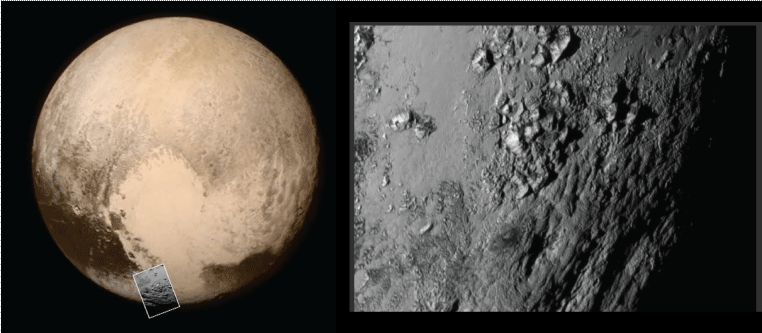In a famous Star Trek misquotation, Mr. Spock says to Captain Kirk, “It’s life, Jim, but not as we know it”. Well, yesterday the New Horizons spacecraft returned its first closeup of Pluto, and it’s geology, but not as we know it.

Pluto’s Tombaugh Regio (left) with 2-mile high distinctly non-terrestrial water-ice mountains (right).
The Tombaugh region of Pluto contains a craterless expanse dotted with two-mile high mountains. The nitrogen, methane, and carbon monoxide ices that cover much of Pluto’s surface are not strong enough to support such tall mountains, but water ice at Pluto’s frigid temperatures is, and it is water ice that must form the bedrock or “bed-ice” of these mountains.
What generates the heat that continues to erase Pluto’s craters against planetary bombardment? It can’t be tidal forces, like those that generate Io’s volcanoes at Jupiter, because nearby Charon is too small and in tidal equilibrium with Pluto. Possibilities include Pluto’s heat of formation, from a big “splat” that formed Charon and its smaller moons, or radioactivity from the uranium and thorium in the silicates in its interior, which must be present to account for Pluto’s relatively high density. A more provocative proposal is a global interior liquid water ocean that is gradually freezing and whose latent heat drives geysers or cryovolcanism while dredging up nitrogen and methane to replenish Pluto’s tenuous atmosphere, which is rapidly escaping to space. Stay tuned!

One response to “It’s Geology, But Not As We Know It”
Very interesting. I’ll definitely stay tuned!